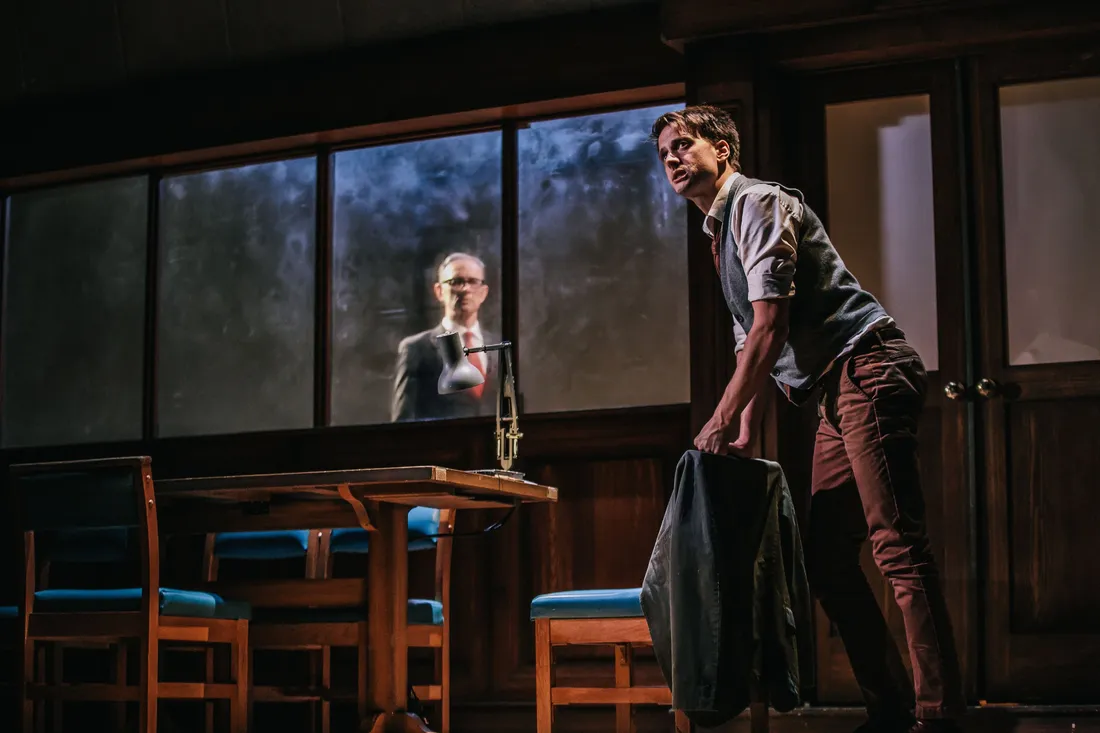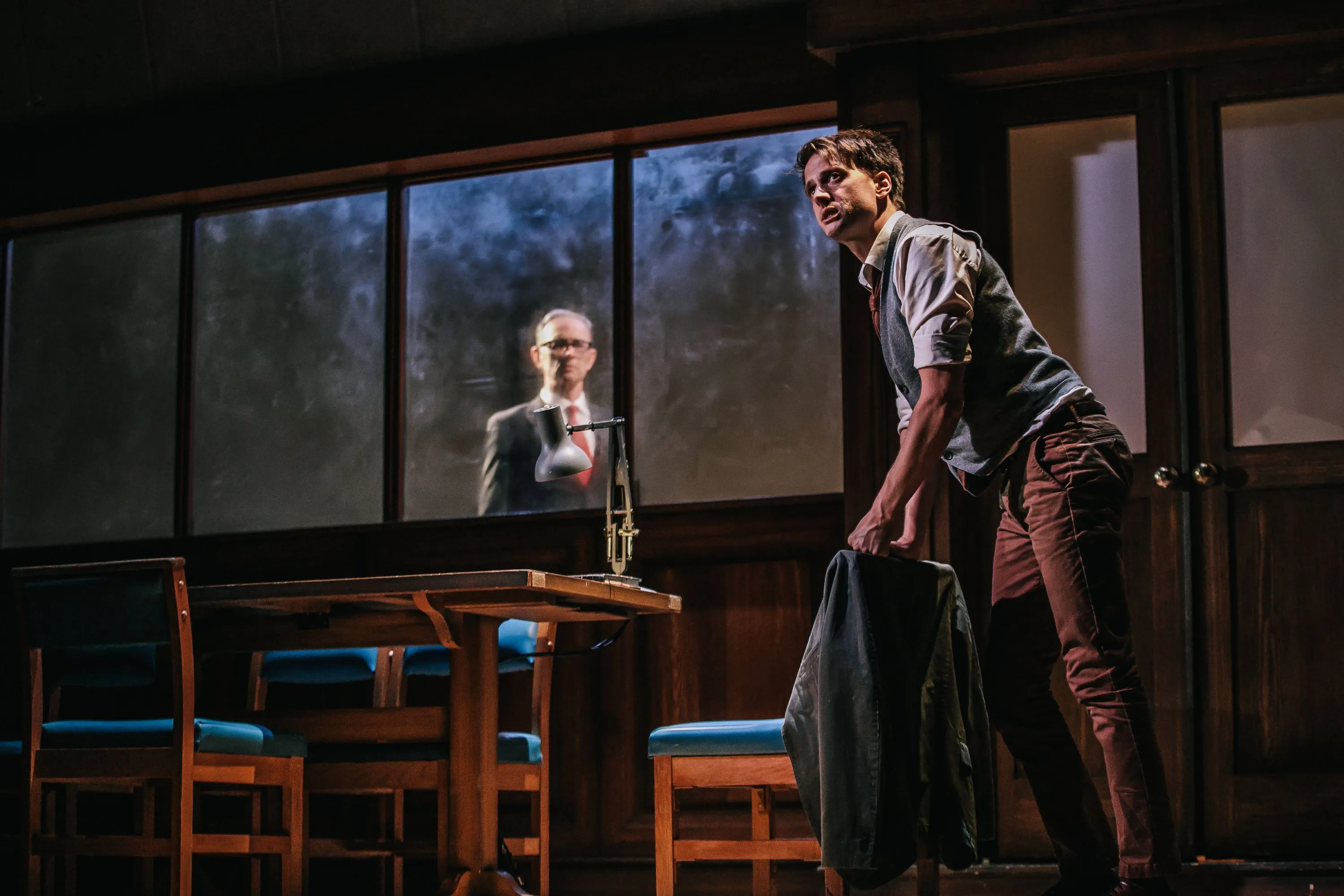In flight through changing times


The Auckland Arts Festival has a more subtle presence this year. Gone the slash of hot pink, the wineglass-toting flocks, the instant village crammed into Aotea Square. Instead there are light-up drums for kids to play, largely abandoned to seagulls during the day. As I write this I still haven’t been over to Silo Park where most of the music programme has migrated, but from the pictures on social media this new site is attracting good crowds (and may indeed be the flashy scene I am missing).
Inside the venues themselves there’s a buzz and plenty of wine glasses. Aotea Centre’s ASB theatre was filled to capacity for the second night of Giselle, the headlining English National Ballet tour choreographed by Akram Khan. Even a fire alarm ten minutes into the second half couldn’t quell the joy of the crowd, who filed out into Aotea Square with typical Kiwi acceptance quietly chatting among themselves while waiting for the all-clear. “Burnt toast?” someone speculated. “That choreography was far too simple,” someone else said.
Simple or not, there was no doubting the professionalism of the British dancers, who continued as if there’d been no interruption when we were all back in the theatre. Truly the embodiment of the phrase ‘keep calm and carry on.’ I was impressed by the elegance of the set design by Tim Yip: a huge wall that rotated to bisect the stage and provide a second level, perfectly complementing the precise lighting design by Mark Henderson. But the dancing, beautiful as it was, somehow failed to move me. And although there were some references to factory labour and exploitation of the masses, these ideas didn’t seem to make it clearly onto the stage, instead foundering in the pages of dramaturgical analysis in the programme.
In contrast, homegrown epic OrphEus – a dance opera, choreographed by Michael Parmenter for The New Zealand Dance Company, had me quietly thrilled from the start. This work is epic in scale and reaches across the disciplines of classical music, contemporary dance, film and documentary theatre. It has been three years in the making and many more in the dreaming. Watching it I wondered whether it is the fate of New Zealand artists to always come back to the themes of belonging and migration: we all stand on such unsteady ground. Such fertile soil for growth.
The curtain is raised on a stripped-back stage: old posters from previous shows at the Civic visible while musicians, seemingly post-rehearsal, rest on a raised platform. The only apparent set elements are some giant suspended suitcases. But as the first dancer walks across the stage the blacks are dropped one by one and the audience is invited into the dream. John Verryt’s inventive set is a highlight, constantly morphing and changing, a bellwether for the shifts of mood in the piece. Nik Janiurek’s lighting design is both subtle and atmospheric. The large cast – professional dancers and a movement chorus – move with precision, but never predictably. Baroque music, performed live by ensemble Latitude 37 and opera singers wandering among the dancers seemed a curious choice at first: it is both surreal and calming, almost somnolent at times. After a while I realised that the music played against the raw energy of the dancers, gradually instilling a sense of unease. That shifting earth again.
For Orpheus, danced by Carl Tolentino, is wanderer between worlds and legends. He is a time traveller too, his journey clearly referencing Jewish escapees, Australian detention camps, dawn raids in New Zealand and (emotionally for me) refugees fleeing China post-war. Tolentino’s Orpheus presents a humbler, more human interpretation of the classical wonder boy. He’s more everyman than demigod, and his response when he finds his wife Eurydice (Chrissy Kokiri) dead is full of human frailty. And we are all travellers between worlds in our brief time on this earth. We are all small heroes, forever in rehearsal, part players pushing against the shifts of history.
It is always a huge risk to make big works, especially works bringing together practitioners from diverse disciplines. There is the risk of there being too much material and too many ideas, but in this case I enjoyed all the layers coming together. It made for a richness and complexity that was deeply satisfying.
Similarly complex was Tea, written and directed by New Zealand playwright Ahi Karunaharan. This is not the first time Karunaharan has shared his discovery of his Sri Lankan heritage, but it is his most ambitious work to date. For me, it is a triumph just to see ten Kiwi actors of South Asian heritage on a main stage together, playing characters that are layered and authentic. If it was just for that Tea would be a landmark piece.
But of course, Tea stands on its own merits. It drops moments of lyrical beauty. In the opening minutes an old man, returning home, says “We are intruders in our own home.” What follows is a slowly unravelling family epic, a whodunnit of hope and betrayal stretching across six generations. Like OrphEus, Tea jumps from time to time, its characters influenced by real historic events: colonisation, slavery, revolt. Like OrphEus, Tea celebrates the strength of the human spirit and the redemptive power of remaining true to oneself, a message deeply resonant with a New Zealand audience. It is a rich and subtle brew.
1984, a theatrical adaptation of George Orwell’s novel by Robert Icke and Duncan Macmillan, has won awards across the UK. This production tours from South Australia and (hurray for Festivals!) also has a large cast of nine. It’s been a couple of decades since I last read the book so I can’t speak for how closely the script follows the book. Like other shows, this work re-presents an older story for our unstable times. Concepts such as ‘Newspeak’, a nonsensical language developed to suppress independent thought, mass surveillance, the ability to reach into people’s homes through communication devices and spy on their thoughts, constantly shifting ‘truths’ from leaders – seem uncomfortably close to our reality today.
The detailing of the set and costumes gradually shifts time from the 80s to a period closer to our present day – or perhaps the very near future. The set design is the most jaw-dropping part of the production, with no expense spared – hidden cameras, projection, collapsing walls - to ensure that the audience never trusts what we see. From where I was sitting I could hear the buzz of the theatre attendant’s security earpiece throughout the show, adding to my sense of being watched.
Encompassing as it was, I found the story disjointed, with too many characters to follow (perhaps that was the point). But while with Tea and OrphEus I left the show feeling fuller, here I left feeling empty and despairing. 1984 is not about hope. I don’t think it’s supposed to be. But its dystopian vision of our past and future also offers no dialogue about solutions. It’s a theatrical plunge into bleakness.
I feel very full from week one of the Auckland Arts Festival. Four stunning shows, all with opulent production values and talent in abundance. It’s also left me pondering on the function of live performance, and what an arts festival does in a population. From my taste, you’ll have already guessed that I lean towards theatre that engages in dialogue and tweaks us out of our comfort sphere, rather than being just escapist or shocking. I felt that the New Zealand productions were more engaging and relevant, and more than held their own against the international shows. This probably reflects my bias as a New Zealand practitioner more than anything else. It does, however, support the decision of the artistic director to put Kiwi-grown shows front and centre at this Festival. Roll on week two.
Auckland Arts Festival, New Zealand Dance Company